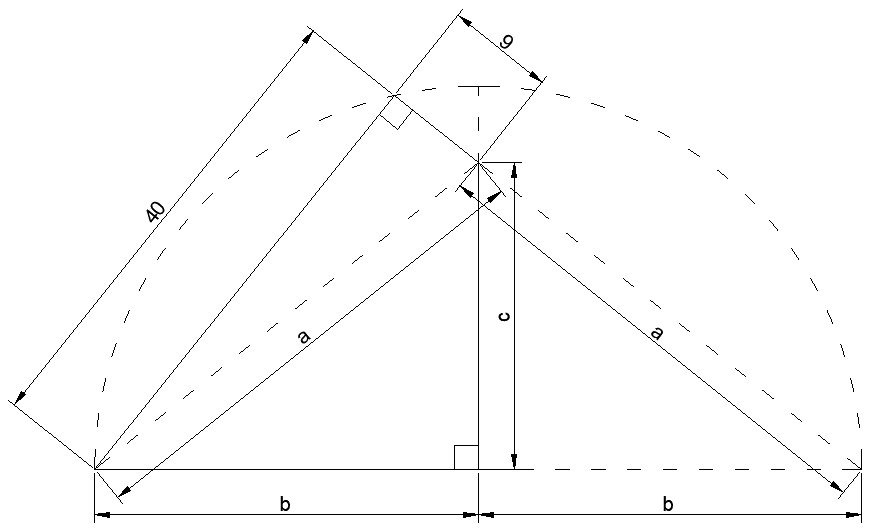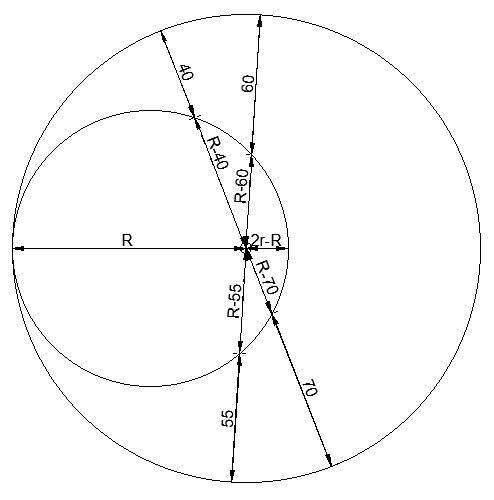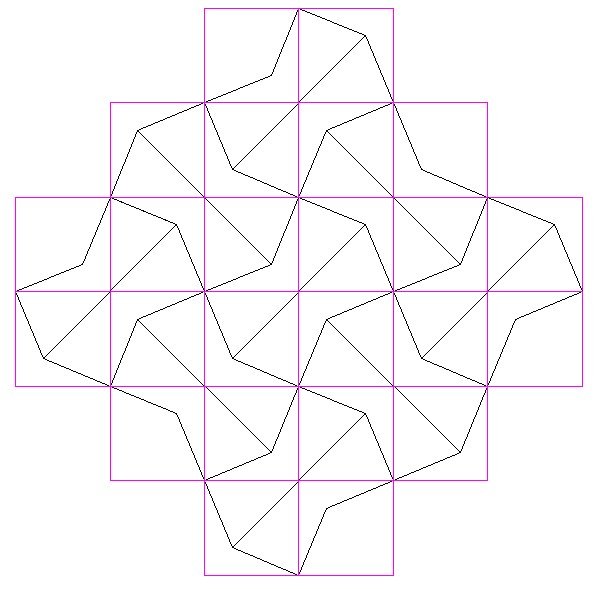Consider a simplified generalised version of the figure as below, scaling the figure down by a factor of 15 and letting the 33 be an unknown value for the time being.
From the angle bisector theorem, AB/BD = AF/FD. I’ve called the length of BD ‘a’ hence AB = ax.
ABD is a right-angled triangle, so by Pythagoras we have a^2+(ax)^2=(x+1)^2
a^2(x^2+1)=(x+1)^2
a^2=((x+1)^2)/(x^2+1)
We’ll also use the fact that triangle ABD is similar to triangle BDE, since they share the angle at D and they both have a right angle.
h/a=ax/(x+1)
h=xa^2/(x+1)
But we have another expression for a^2 above, so let’s use that:
h=x(x+1)/(x^2+1)
Now, here’s the clever step. We could have gone through the exact same steps from the right-hand side instead, and found a value for h in terms of y, and we would have ended up with the exact same expression. So it’s also true that:
h=y(y+1)/(y^2+1)
Now, returning to the specific puzzle, we’ll keep the DF=1, but now allow x=33/15, so we just have a scaled down version of the real puzzle.
Plugging x=33/15 into the expression gives us h=88/73.
88/73=y(y+1)/(y^2+1)
Cross-multiplying and multiplying out we get the quadratic:
15y^2-73y+88=0
This has the two solutions 33/15 and 40/15. We already knew about 33/15 as that was the value of x that we plugged in. So y=40/15.
Rescaling so that FD is once again equal to 15, we find that the missing value from the puzzle is 40.
There is arithmetically an easier method but it’s harder to see how it’s justified or why it works. And that is that the locus of points that are a constant ratio from C and F respectively is a circle whose diameter is AD. Once you know that, calculating the missing length is relatively straightforward.
?/15 = (?+48)/33
33? = 15? = 720
18? = 720
? = 40.












